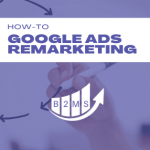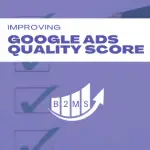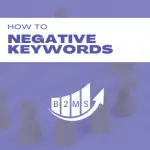Pros and Cons of the Different Types of Digital Ads
Digitalization pushed many advertising formats into digital ads. The lines between the formats are fading. Commercials can not just be used on a single platform anymore, but repurposed in a multi-channel strategy. Even though TV advertising isn’t dead, the format has evolved into new channels like Online-Video-Ads, Connected TV (CTV), or Over-The-Top (OTT).
In this blog post we will look at the different types of digital advertising and analyze their advantages and disadvantages.
What are the different types of digital ads?
Search Engine Marketing (SEM)
Search Engine Marketing or short SEM is pay-per-click (PPC) advertising in search engines. When a user conducts a search digital text, display, shopping, or video ads will appear.
Advertisers bid on keywords or audiences to get their promotion seen.
Search terms get matched to a combination of the highest bidder and most relevant result to that query.
Search ads can have more extensions to engage with the user like direct call functions, Google Maps extension, or site links to other relevant pages like pricing, solutions, or about-us.
SEM is not limited to only search text anymore. Video ads like YouTube based on search terms or audiences fall into the Search Engine Marketing category, too.
With a low barrier to entry and raising competition, the prices have gone up exponentially over the past years.
Pros SEM
- Easy to get started
- Small budget tests are possible
- Very targeted digital ads
- High level of ad personalization
- Pull-marketing instead of push: show your ads in your customers’ research phase based on their search intent.
- Sophisticated attribution tracking
- Optimization is possible based on your campaign KPIs like clicks vs conversions
Cons SEM
- Increasing costs
- High competition
- Requires specific knowledge to stay competitive in the long run
Digital Banner/Display Ads
Display ads have a bad reputation in the public mainly due to the overuse of remarketing. Remarketing or retargeting is the most common use-case for digital display ads. Based on a website visit a user will be targeted with display banners across the internet.
However, display ads can also be used for branding and awareness campaigns in contextually relevant environments or based on audience targeting.
Contextual display ads are shown if the content of the page where the banner is displayed matches the targeting criteria. For example, a law firm could show ads on pages about divorce rights.
Display ads are usually priced on a CPM (Cost Per Mille) model. The “mille” is a little confusing. It comes from the Latin word Mille meaning thousand. Advertisers pay an amount per thousand impressions. A common price would be $8 CPM, meaning that the cost per 1000 impressions would be $8 or $0.008 per impression. That would be hard to measure and the industry aligns on a CPM price structure.
Display ads usually don’t play a single role in customer acquisition. As mentioned, banner ads are often used as remarketing and therefore can’t get 100% of the attribution. Also, display ads often work in combination with other marketing messages. Hence, a View-Through-Rate is often used in measuring the effectiveness of display campaigns. Has someone seen a display ad or not? This can be compared with audiences that haven’t seen one.
Pros Display Advertising
- Direct message, even with specific relevant products or services
- High reach
- Suitable for branding/awareness campaigns
- Multi-channel strategies
Cons Display Advertising
- Advanced attribution tracking required
- Bad public reputation
- Data privacy regulation will make it more difficult to target potential customers
- Decreasing viewability rates
- Untrustworthy pop-up and pop-under banner formats evolve
Digital Video Ads
Video ads have evolved from TV commercials to longer, story-telling videos on one side, to short Social Media ads on the other side. Regardless of the platform, video ads are now produced and exported in multiple formats and lengths to meet the channel requirements.
Dynamic Creative Optimization allows to almost creepily personalize video ads. The same ad can be shown in rainy weather one day and dry heat the other, depending on the actual weather in the area. Backgrounds can be swapped out on a green screen to drive an advertised car along the Pacific Coast in California, but along an industrial harbor in New England.
Video ad slots can be bought in different pricing models: CPM, CPC, or even CPA.
Digital video ads come basically in two different formats: in-stream and out-stream.
Types of digital video ads: In-Stream
In-stream video ads are within another video, e.g. a YouTube video. Often they are skippable after a few seconds to proceed to the actual video the user wants to watch. In-stream videos are distinguished into pre-, mid-, or post-roll ads depending on when they air.
Out-stream video ads
Out-stream video ads don’t have to be within video content, they can be within text, newsfeeds, or even somewhere stand-alone on a page. They are great for publishers who don’t have video content on their pages. However, they can come with the cost of latencies or slow page load times. Additionally, they can be annoying for users if they expand, move the text around they are trying to read, or autoplay with sound.
In-feed video ads on Social Media can be seen as out-stream ads but are technically their own category.
Advantages Video Ads
- High reach
- High engagement
- Storytelling with motion and sound
- An increasing number of channels and platforms
- Retargeting capabilities based on video engagement. For example, 50% watch time to build a lead gen funnel
Disadvantages Video Ads
- Increasing prices and competition
- Bad reputation of out-stream formats due to overuse and bad user experiences
- Often videos are skipped, but advertisers have to pay for the impression on a CPM model
Social Media Advertising
Social Media ads come in various formats from display, sponsored posts, videos to message and chatbot ads.
Social Media channels have very robust targeting capabilities. Some networks are more suitable for certain campaigns than others. For example, LinkedIn ads are a unique B2B environment versus Facebook Ads are more personal (not excluding B2B ads but just how the platform is generally used).
Pros Social Media Ads
- Very advanced targeting capabilities
- High reach
- Advanced tracking
- A high number of KPIs and campaign objectives
- Multi-formats
- High engagement
- Direct audience approach
Cons Social Media Ads
- Increasing media costs
- Growing competition
- Data privacy regulations make it more difficult for multi-channel strategies in the future
- The social networks own the audiences
Digital Audio Ads
This type of digital ad is fairly new. Especially, the way how media planners can buy digital audio ads has evolved. Media buyers can tap into programmatic audio to buy audiences very targeted on streaming platforms like Spotify and Pandora but also podcasts and voice search devices. Audio ads can also be aired on traditional radio stations.
Pros Digital Audio Ads
- Production can be easier than video ads
- Small tests are possible
- Very targeted sponsorships are possible
- Programmatic media buying
- Local advertising capabilities
Cons Digital Audio Ads
- Advertising waste can be big with traditional media buys and sponsorships
- Difficult attribution
- Repetition is required for effective ads
Digital Out-Of-Home Ads (DOOH)
Out-Of-Home advertising is in a Renaissance due to digitalization. While there are still old-fashioned billboards, more and more OOH spaces have become digital screens.
This allows advertisers to quickly change and buy media, advanced measuring, and even programmatic/real-time bidding.
DOOH projectors allow for 3D effects to grab the attrition of pedestrians.
Pros DOOH Ads
- Digitalization
- Increasing personalization possible
- Tracking is getting advanced
- Programmatic buying capabilities
Cons DOOH Ads
- Requires budgets and planning
- Can be still tricky to measure
- Advertising waste
Native Ads
Native advertising mimics the look and feel of the publishers’ environment. Only small disclaimers that this is a sponsored post give the ad as a commercial away.
Native ads usually have high engagement rates, also post-click.
There’s a fine line between social media in-feed ads and native advertising. Technically the sponsored posts on social networks can be seen as native ads as they copy the native look of the social media platform.
Pros Native Ads
- High engagement
- Growing inventory and therefore reach
- Advanced targeting capabilities like contextual targeting
- Flexible pricing structures: CPC, CPV, or CPA
Cons Native Ads
- Requires often unique platform ad specs
- High CPCs
- Still limited inventory and high competition
After all, each ad campaign should be profitable. With increasing costs, it can be difficult to forecast advertising campaigns effectively. That’s why we have created our CPL and CPA Forecast Tool

Sascha is a Lifecycle Marketing Consultant with over 8 years of digital marketing experiences in Silicon Valley, the UK, and Germany.
After leading the demand generation for a 100+ million company, he decided to venture out on himself. He’s now helping clients to attract and convert more leads and customers.
His main focus are SEO, paid media & marketing automation – all with the focus to tie marketing campaigns to revenue.
Sascha has been featured in industry publications.



